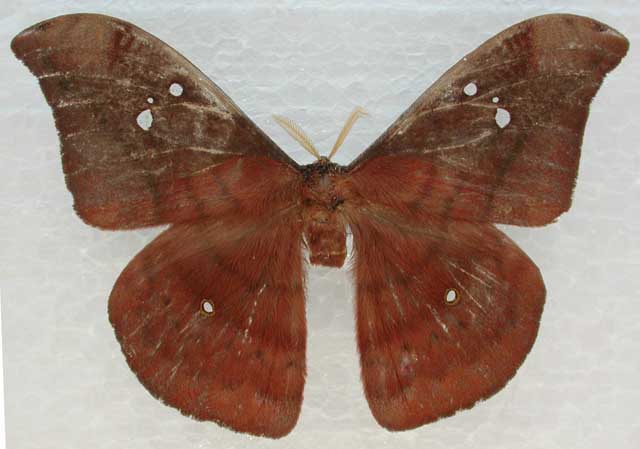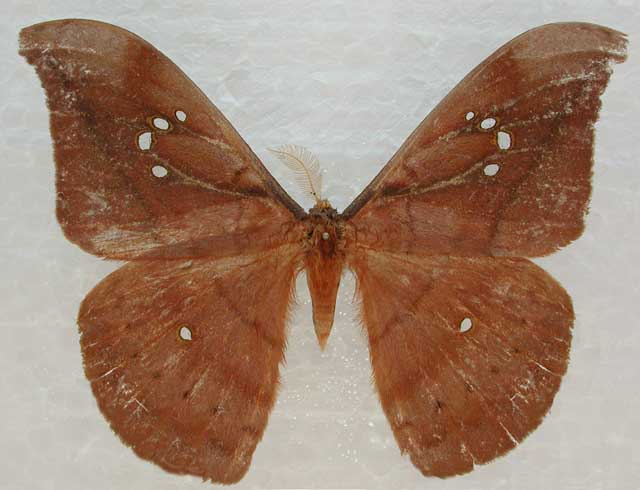Copaxa satipoexpandens
Copaxa satipoexpandens
koh-PAX-uhMsah-tih-poh-ex-PAN-dens
Brechlin & Meister 2010

Copaxa satipoexpandens male, Junin, Peru,
courtesy of Eric van Schayck, id by Bill Oehlke.
This site has been created by
Bill Oehlke at oehlkew@islandtelecom.com
Comments, suggestions and/or additional information are welcomed by Bill.
| TAXONOMY:
Superfamily: Bombycoidea, Latreille, 1802
Family: Saturniidae, Boisduval, [1837] 1834
Subfamily: Saturniinae, Boisduval, [1837] 1834
Tribe: Saturniini, Boisduval, 1837
Genus: Copaxa, Walker, 1855
| | MIDI MUSIC
"What.A.Wonderful.World"
copyright C. Odenkirk
MIDI CITY
ON.OFF
<bgsound src="world.mid" LOOP=FOREVER>
|
DISTRIBUTION:
Copaxa satipoexpandens
(wingspan: males: 116mm; females: mm // forewing length: males: 58-60mm; females: )) flies in
Peru: Junin: Satipo.
It is a very dark species with three relatively large hyaline areas on each forewing and a single, yellow-encircled spot on each hindwing.
The hindwings have a definite reddish cast which is also evident in lower portions of the forewing, which is otherwise dark brown except for a
lighter brown apical patch. The apex is produced with a rounded tip. The female is unknown.
It has been taken at elevations from 700-2000m.
The following specimen from Peru, seems to be a best match for C. satipoexpandens or andorientalis.

Copaxa satipoexpandens male, Peru,
courtesy of Eric van Schayck,
tentative id and significant digital repair by Bill Oehlke>
FLIGHT TIMES AND PREFERRED FOOD PLANTS:
Copaxa
satipoexpandens larvae probably feed upon avocado (Persea americana).
Most of the Copaxa brood continuously so I suspect
satipoexpandens would be on the wing every month of the year, but so far there are only reports for June-July-August and December.
ECLOSION, SCENTING AND MATING:
Male Copaxa satipoexpandens moths use highly developed antennae to locate
females by tracking the airbourne pheromone plume. The female releases this scent into the air via an organ extended
from the tip of the abdomen.
EGGS, LARVAE, COCOONS AND PUPAE:
It is hoped that this alphabetical listing followed by the common name of the anticipated foodplant will
prove useful. The list is not exhaustive. Experimenting with closely
related foodplants is worthwhile.
Persea americana .......
|
Avocado
|
The species name is indicative of location of specimen type material: Satipo, Junin, Peru, and the species is probably quite similar to
Copaxa expandens, but seems to be a very dark species.
Use your browser "Back" button to return to the previous page.
Return to Copaxa Index
Goto South American Saturniidae Directory
Goto Main Saturniidae Index

